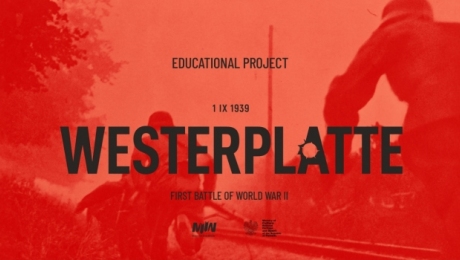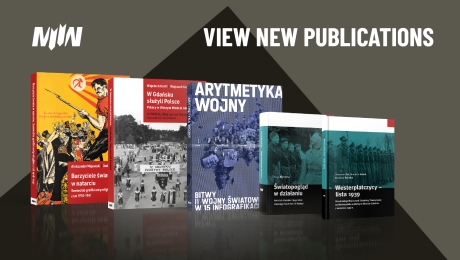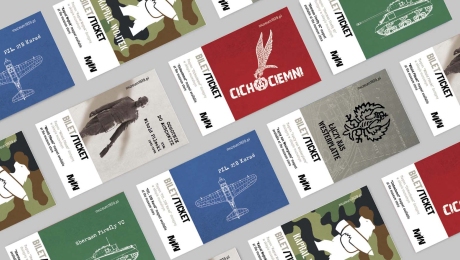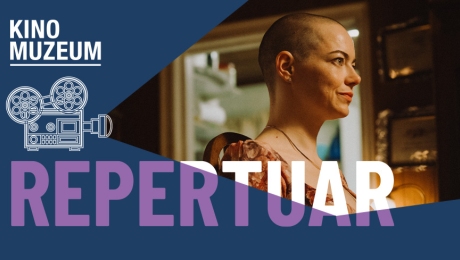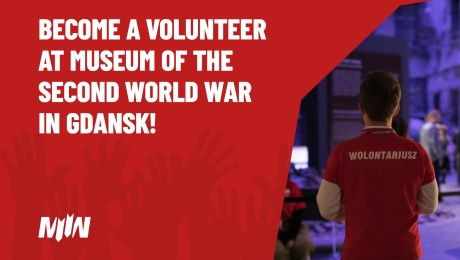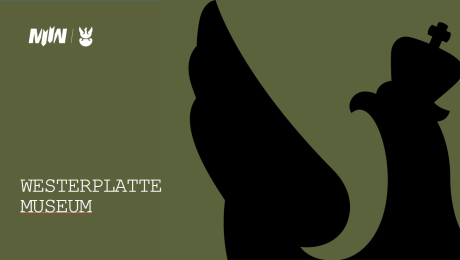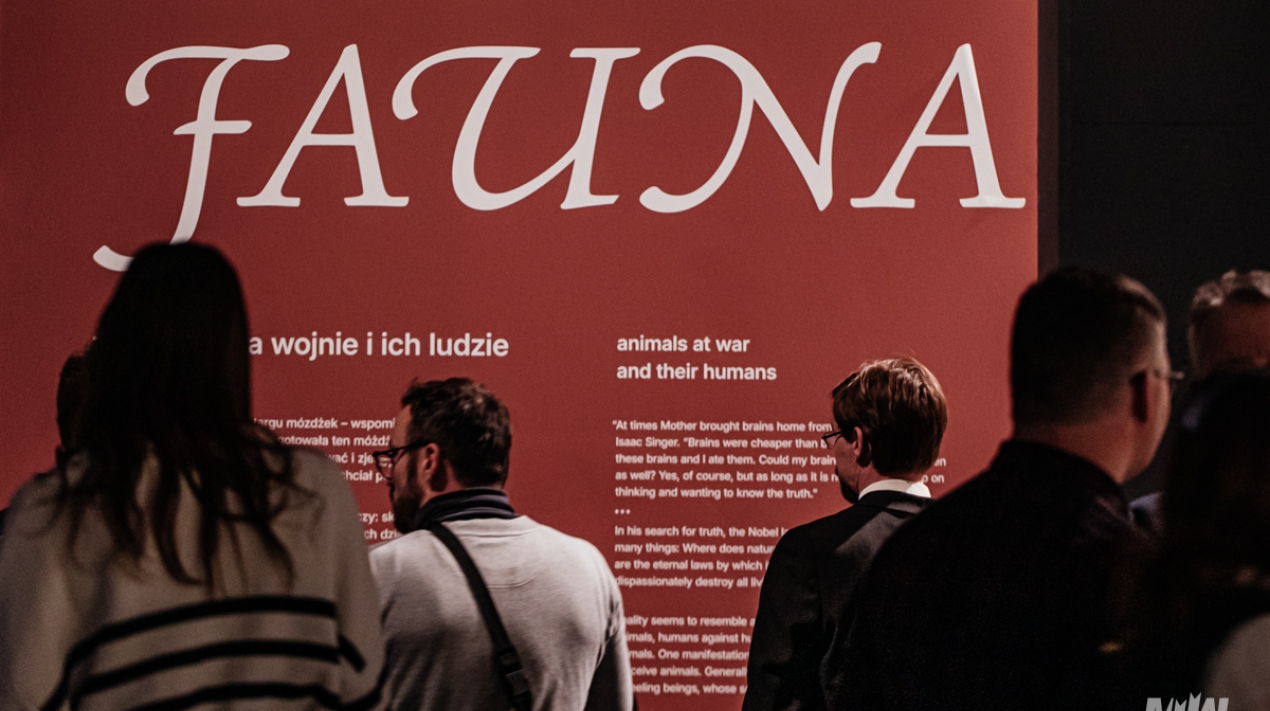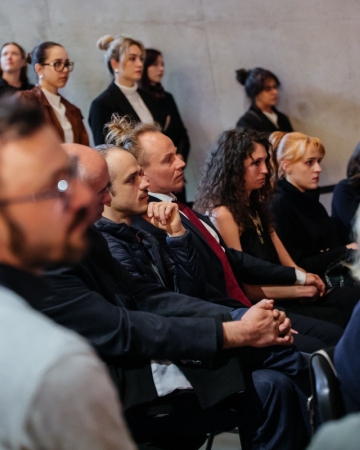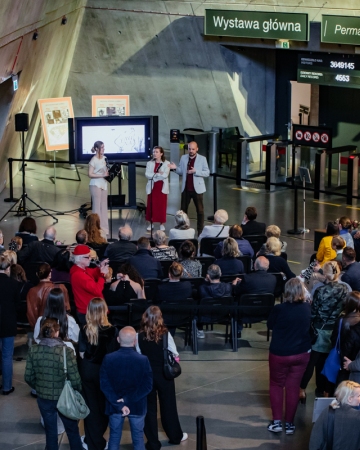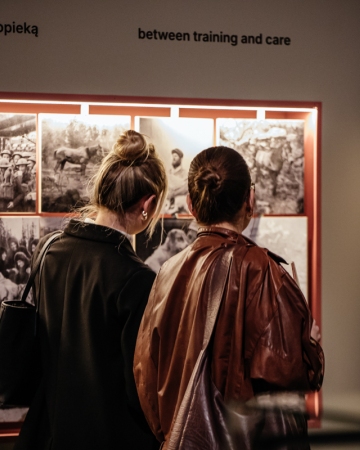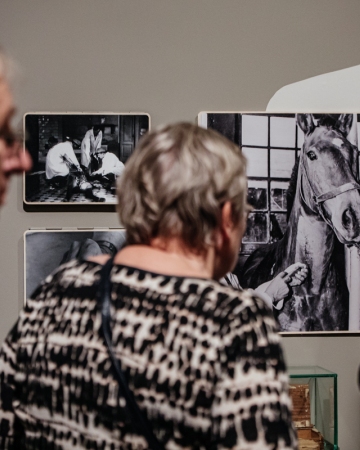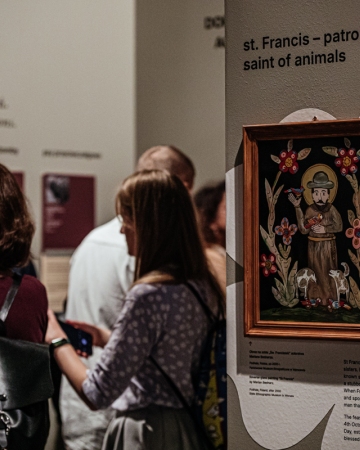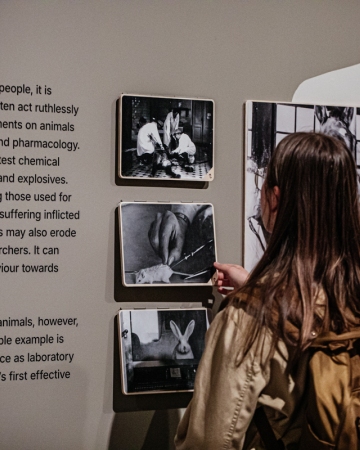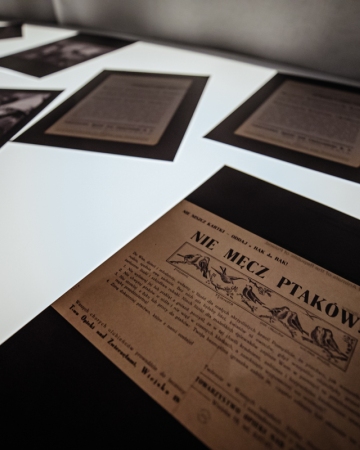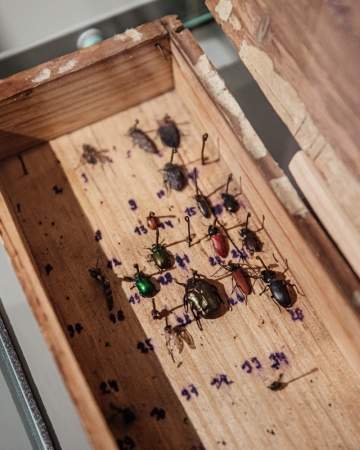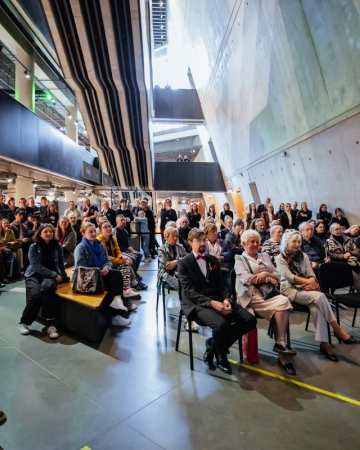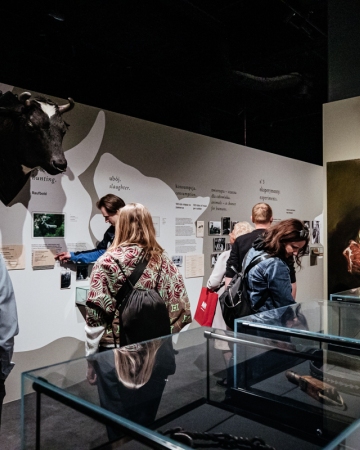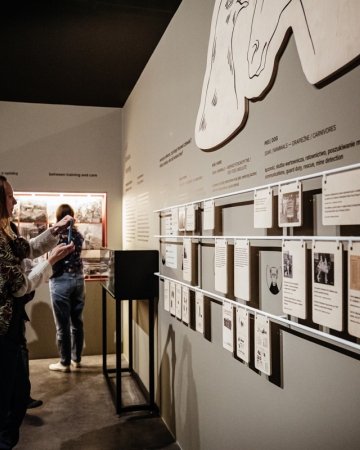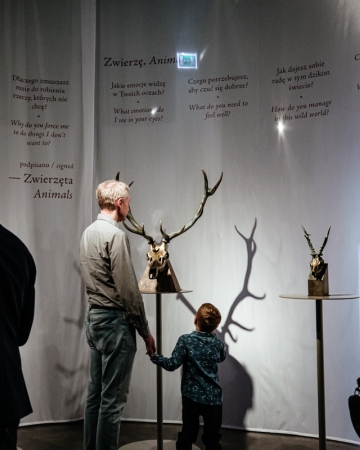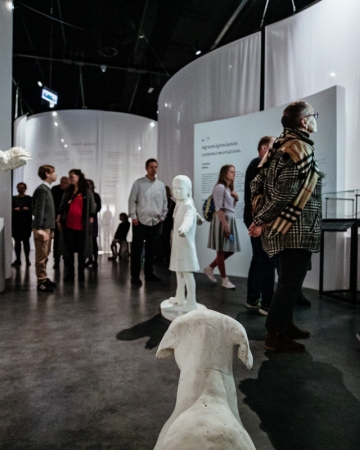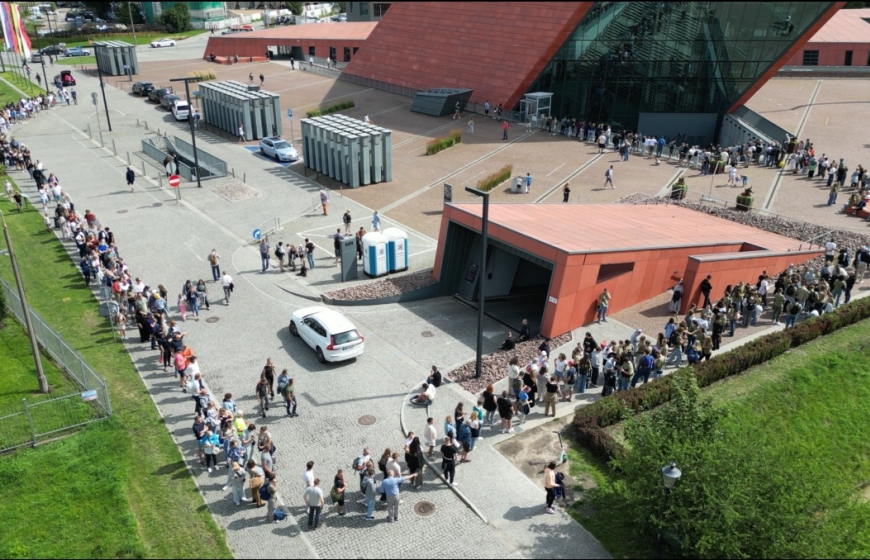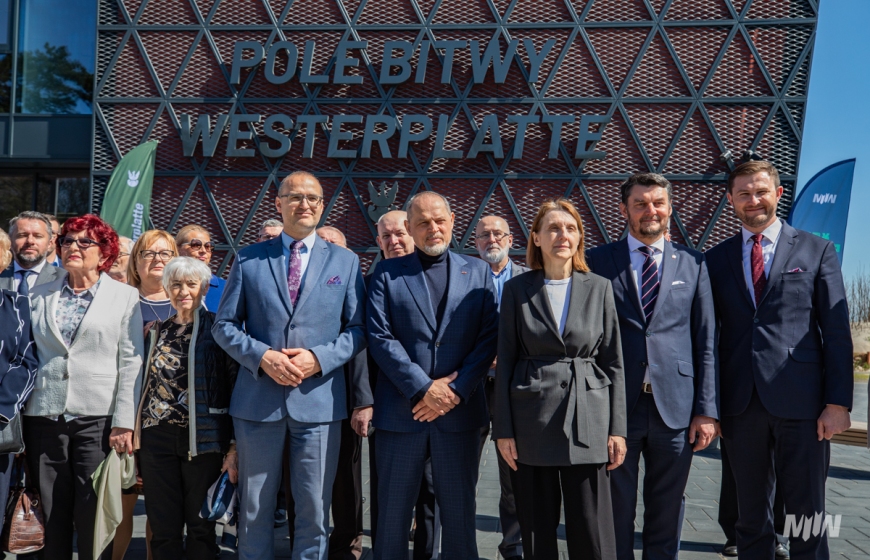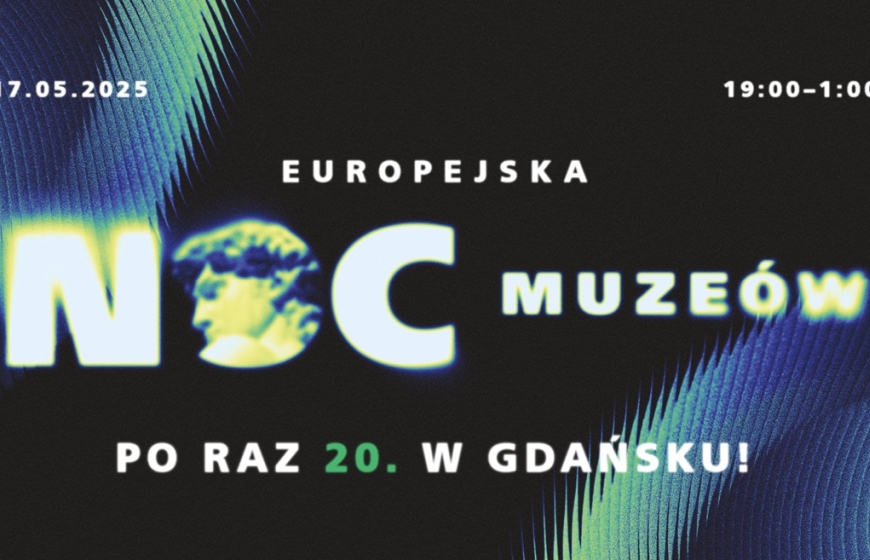Temporary exhibition “FAUNA. Animals at War and Their People”
About the exhibition “FAUNA. Animals at War and Their People” – in brief:
The exhibition deals with various aspects: ethical (norms for the use of animals), ecological (human impact on the ecosystem), historical (look at the war through the subject), and aesthetic (everyday life objects are accompanied by works of art).
There are over 60 exhibits presented. Not only objects from the collection of the Museum of the Second World War but also from other museums and private collections. Among the authors of the works are: Zdzisław Beksiński, Szybalsky, Łukasz Surowiec, Kinga Burek, and Paweł Sasin.
Duration of the exhibition | May 7th – December 30th 2025
Venue | Musem of the Second World War, pl. W. Bartoszewskiego 1, Temporary Exhibition Hall, Level -3
The exhibition is accompanied by a catalogue and a series of gadgets.
Detailed description of the exhibition
This is the exhibition of opposites, contradictions, and contrasts.
We can see pictures that bring us joy but also those from which we instinctively look away.
What is more, we notice people suffering from separation from animals as well as those who kill them for pure pleasure. We manage to spot both animals treated as friends and those subjected to chemical or biological weapon testing.
But what particularly captures our attention are the contradictions embodied in the same objects and individuals. We observe people kind to fellow humans who torment animals. We also witness animal lovers who ruthlessly kill their own kind.
We take all these stories and place them in the exhibition. At the same time, we come to believe that reality resembles a “war of all against all”: people against people, animals against animals, and ultimately humans against animals. This is the image of the world briefly outlined in the exhibition “Fauna. Animals at War and Their People.” An image of a conflicted creation.
Purpose of the exhibition
The aim is to introduce the multi-dimensional motif of animals into the historical narrative. If the exhibition sensitizes museum visitors to the fate of our “smaller brothers,” if it promotes respect for nature, it will have fulfilled our intentions. But if it also encourages visitors to critically reflect on human (including their own) attitudes towards animals, it will not only achieve our goals but be considered an immeasurable success.
Curators’ assumptions
Above all our mission is to speak about the victims of war, to restore the memory of the unheroic heroes – especially the weakest, often voiceless. This pattern includes children, the mentally ill or disabled. And we place in it also – often overlooked – animals.
We want to tell the stories of animals through the exhibition medium, reuniting various cultural texts. Examples of those connections include the combinations of Szybalsky with Zdzisław Beksiński or Curzio Malaparte with Wisława Szymborska.
Exhibition content
The exhibition focuses on exploring the complex relationships between humans and animals. It is also an attempt to understand humans through understanding animals – to look at them through their opposite. How a human treats fauna reveals their attitude towards themselves, their potential to do good and evil, and their vision of reality.
The exhibition deals with various aspects: ethical (norms for the use of animals), ecological (human impact on the ecosystem), historical (look at the war through the subject), and aesthetic (everyday life objects are accompanied by works of art).
Our narration centers on the period of World War II and the years immediately preceding it, though we also attempt to build a bridge to the present.
Form of the exhibition
Reality resembles a “war of all against all.” One manifestation of this conflict is how humans perceive animals. They have often been treated as mindless beings, incapable of feeling – as if they lacked the most important body part - the head.
The head is considered a universal symbol. As the seat of thought and emotion, it has represented wisdom, power, agency, and individuality. The head is also a part of the body shared by both humans and animals. It is something that connects these beings and at the same time separates them.
The central motif of the exhibition’s narrative is precisely the head. It is represented primarily by spatial objects: sculptures by Beksiński and Szybalsky, plaster models by Sasin, and the preserved head of the bull Geeltje’s Adema.
The contemplative – and somewhat theatrical – space which is housing the sculptures by Szybalsky and Beksiński, forms the starting point for deeper exploration of the human-animal relationship.
***
Think it through and consider whether, in speaking about animals, the exhibition is also speaking about you. If so, what does it has to say?
Curators | Marek Zambrzycki, Monika Krzencessa
Scenography | Biuro Kreacja: Dorota Terlecka, Anna Sabała-Bykowska
Graphic design | Studio Kmicic: Katarzyna Cichosz & Hanna Kmieć
Historical consultation | Prof. Rafał Wnuk, PhD; Janusz Marszalec, PhD
Audio guide | Movietech & Krystyna Czubówna
Honorary Patronage | Minister of Climate and Environment
Media Partners | Dzieje.pl, Miesięcznik Dzikie Życie, MuzeOn, Radio Gdańsk
Social Partner | Fundacja Rozwoju Warszawskiego Ogrodu Zoologicznego „PANDA”






